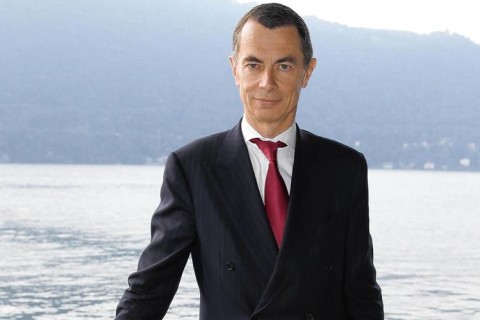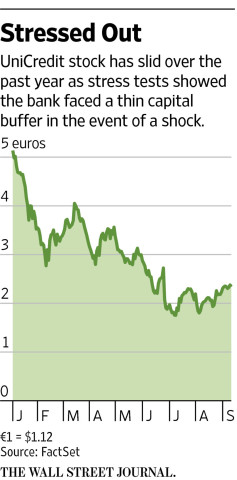By GIOVANNI LEGORANO

MILAN—For UniCredit SpA, the summer of discontent for Italy’s banks looks likely to stretch well into the fall—and possibly beyond.
UniCredit, Italy’s largest lender by assets, emerged as one of the weakest big banks in Europe in July’s stress tests, showcasing the failure of its attempts to respond to rock-bottom interest rates and a huge pile of bad loans.
Now, as Jean-Pierre Mustier, the bank’s new chief executive, readies a big-bang plan to revive UniCredit’s fortunes, he faces a series of unpalatable choices: Aggressive action to cut the bank’s €80 billion ($89.9 billion) in bad loans—the largest of any European bank—would force the Milanese bank to raise billions in fresh capital, while an asset sale could help bolster its capital position but would hurt already thin profit.
Meanwhile, the travails of Italy’s No. 3 lender, Banca Monte dei Paschi di Siena SpA, promise to only complicate Mr. Mustier’s job. On Thursday, Monte dei Paschi said its CEO, Fabrizio Viola, had agreed with the bank’s board to resign, in a surprise move that came as that bank works on a plan to shed €28 billion in bad loans.
Troubles at UniCredit, which has a vast business in Germany and Eastern Europe, could threaten not only Italy’s ailing economy but also the continent’s already fragile financial stability.




